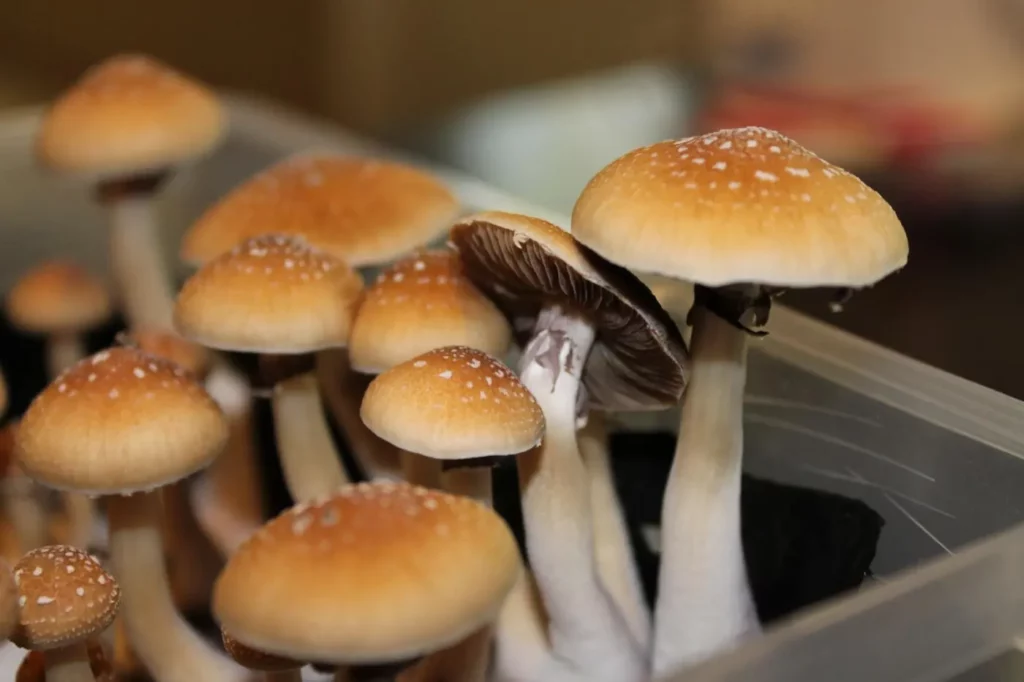In recent years, the conversation around sustainable living and eco-friendly practices has extended into various aspects of our lives, including the cultivation of magic mushroom. As the interest in the potential benefits of magic mushrooms grows, it becomes crucial to consider the environmental impact of their cultivation. In this blog post, we will delve into the sustainable cultivation of magic mushrooms, exploring environmentally friendly practices, ethical considerations, and the potential for a harmonious relationship between nature and psychedelics.

READ ALSO – Exploring the Safety and Risks of Magic Mushroom Use
Understanding the Basics of Magic Mushroom Cultivation
Before we delve into the eco-friendly practices, let’s briefly understand the basics of magic mushroom cultivation. Magic mushrooms, scientifically known as psilocybin mushrooms, contain psychoactive compounds like psilocybin and psilocin, which induce altered states of consciousness when consumed. These fungi naturally grow in various parts of the world, often in nutrient-rich environments such as decomposing organic matter.
However, for those interested in cultivating magic mushrooms for personal use or research purposes, a controlled environment is necessary. Cultivation typically involves creating a substrate – a mixture of organic materials like grain or rice flour – inoculated with mushroom spores. The mycelium, the vegetative part of the fungus, then grows and eventually forms mushrooms under specific conditions of light, humidity, and temperature.
Now, let’s explore how this cultivation process can align with eco-friendly principles.
Sustainable Substrate Choices
One of the key aspects of eco-friendly magic mushrooms cultivation is the choice of substrate. Traditional substrates often involve the use of non-renewable resources like rice flour, which can have environmental implications. Eco-conscious cultivators are exploring alternatives such as using locally sourced and renewable materials, like agricultural waste or even recycled products.
For example, using spent coffee grounds as a substrate not only recycles a waste product but also provides the necessary nutrients for mycelium growth. This sustainable approach minimizes the environmental footprint of magic mushroom cultivation.
Low-Energy Environments
Creating and maintaining the ideal conditions for magic mushrooms cultivation can be energy-intensive, especially in indoor setups where temperature and humidity need careful regulation. Eco-friendly cultivators are exploring ways to reduce energy consumption by incorporating energy-efficient technologies, such as LED lights and efficient climate control systems.
Additionally, some cultivators are embracing outdoor cultivation methods, harnessing natural sunlight and environmental conditions. This not only reduces the need for artificial energy inputs but also fosters a more symbiotic relationship between the mushrooms and the natural ecosystem.
Ethical Harvesting Practices
Sustainability goes beyond the cultivation phase and extends to the harvesting of magic mushrooms. Ethical harvesting practices involve careful consideration of the impact on the local ecosystem. Harvesters should avoid over-harvesting from natural habitats, which could disrupt the balance of the ecosystem and harm the mycelial network that plays a vital role in nutrient cycling.
Instead, cultivating magic mushrooms in a controlled environment allows for a more ethical and sustainable harvest. Harvesters can selectively pick mushrooms, leaving the mycelium intact to continue its ecological functions.
Waste Reduction and Recycling
Magic mushroom cultivation generates byproducts, such as spent substrate or contaminated materials. Eco-friendly cultivators are finding ways to minimize waste by repurposing or recycling these byproducts. For instance, spent substrate can be composted to enrich soil or used as a substrate for cultivating other fungi.
Innovative methods like mycoremediation, where magic mushrooms are used to break down and digest environmental pollutants, showcase the potential of magic mushrooms not only as a psychedelic substance but also as agents for environmental restoration.
Biodiversity Conservation
Cultivating magic mushrooms in a sustainable manner involves considering the broader ecological context. This includes protecting biodiversity in both natural habitats and cultivation environments. Some cultivators are experimenting with companion planting, where mushrooms coexist with other plant species to create a more diverse and resilient ecosystem.

Conserving biodiversity also means avoiding the use of harmful pesticides or fungicides that can have detrimental effects on non-target organisms. Implementing organic and natural pest control methods ensures a healthier and more ecologically balanced cultivation system.
In the pursuit of harnessing the enchanting properties of magic mushrooms, a growing community of cultivators is embracing eco-friendly practices to ensure a sustainable relationship with nature. At the core of this movement is a reevaluation of cultivation methods, starting with the choice of substrates. Cultivators are steering away from traditional non-renewable resources, opting for sustainable alternatives such as locally sourced agricultural waste or recycled materials.
Energy efficiency plays a pivotal role in this paradigm shift, with cultivators incorporating low-energy technologies like LED lights and exploring outdoor cultivation to harness natural sunlight. Ethical harvesting practices emphasize the importance of preserving ecosystems, advocating for controlled environments to minimize impact. Waste reduction and recycling are integral components, with spent substrates finding new life in composting or as a medium for cultivating other fungi.
As cultivators tread the delicate balance between magic and sustainability, biodiversity conservation emerges as a guiding principle. Companion planting and natural pest control methods contribute to diverse and resilient ecosystems. By adopting these eco-conscious approaches, cultivators not only unlock the magic within mushrooms but also contribute to a healthier planet, showcasing the potential for a harmonious coexistence between psychedelic exploration and environmental stewardship.
Conclusion
As the interest in magic mushrooms continues to grow, it is imperative to approach their cultivation with a mindful and eco-friendly perspective. Sustainable practices not only reduce the environmental impact of cultivation but also contribute to a more harmonious relationship between humans and nature.
Whether you are an experienced cultivator or someone exploring the world of magic mushrooms, incorporating sustainable methods into your practices can make a significant difference. By fostering a deeper connection with the environment and embracing eco-friendly cultivation, we can ensure that the magic of these mushrooms remains enchanting without compromising the health of our planet.

